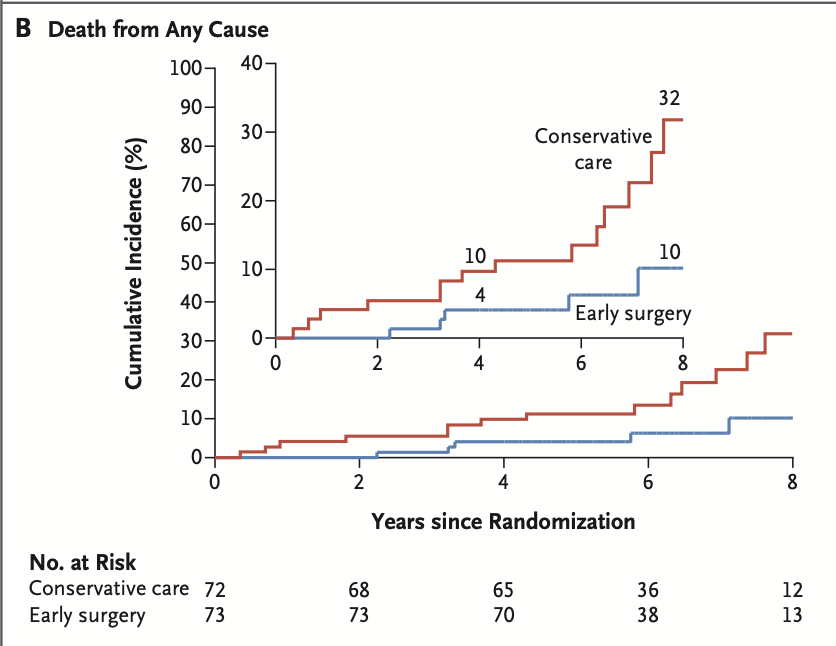Aortic Stenosis: New England Journal of Medicine
Aortic stenosis is a medical condition involving disease of the aortic valve. The aortic valve of the heart functions to allow the left ventricle of the heart to eject oxygenated blood from inside the heart to the rest of the body.
The aortic valve opens fully to allow the exit of blood from the heart into the aorta during systole and closes to prevent regurgitation from the aorta backwards into the heart during diastole.
This “one way valve” concept of the aortic valve is important to maintaining adequate blood pressure and blood flow to the brain and other vital organs.
Aortic stenosis refers to a narrowing (stenosis) of the aortic valve area which restricts blood from exiting the heart and makes the heart muscle work harder in order to pump the blood. This creates strain on the heart muscle.
This narrowing of the aortic valve area also limits the amount of blood flow and blood pressure that the heart can deliver to the brain and body.
The aortic valve area is narrowed most commonly by a build-up of calcium on the leaflets of the aortic valve. This calcium build-up prevents the leaflets (flaps) from opening fully and can even fuse the leaflets together.
The end-result is a smaller sized channel through which blood must pass as it exits the heart.
There are generally two therapeutic approaches for aortic stenosis and the decision on which treatment approach is best is determined by a number of factors. One approach is medical therapy (blood pressure control) and the other is replacement of the aortic valve (surgical or trans catheter). The most significant factor for choosing one therapy over another relates to the severity of the aortic stenosis, but there are numerous other variables to consider (such as patient age, etc.).
Patients with aortic stenosis can be symptomatic, meaning they develop chest pain or shortness of breath. It is also possible to have aortic stenosis and have no symptoms at all.
The New England Journal of Medicine (NEJM) just published a new research study comparing medical therapy versus surgical therapy for patients with asymptomatic aortic stenosis (no symptoms).
The authors demonstrated that early surgical intervention was better than conservative therapy for asymptomatic aortic stenosis.
Conclusion
This is an important research publication because it was a randomized controlled trial which helps eliminate bias in the data. We now have more information to share with patients with aortic stenosis and help in the decision making process for the type of treatment.
We will need additional studies to help confirm these findings, but this information is very helpful for surgeons, cardiologists, and patients.
Was this post informative?
Subscribe to my newsletter to learn more about the aorta, its diseases, and how to treat them.
Comments
Share your thoughts below — I try to get back to as many comments as possible.

